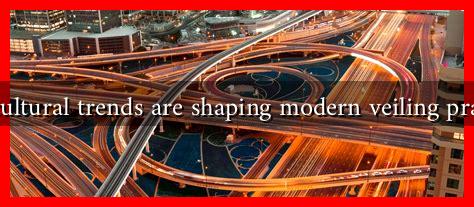-
Table of Contents
What Cultural Trends Are Shaping Modern Veiling Practices?
Veiling practices have long been a subject of fascination and debate, often viewed through the lens of religion, culture, and politics. In recent years, however, modern veiling practices have evolved significantly, influenced by a myriad of cultural trends. This article explores the various factors shaping contemporary veiling, including globalization, feminism, and social media, while providing insights into how these trends are redefining the meaning and significance of veiling in today’s world.
The Impact of Globalization
Globalization has played a pivotal role in transforming veiling practices across the globe. As cultures intermingle, traditional practices are often reinterpreted and adapted. The following points highlight how globalization influences modern veiling:
- Cross-Cultural Exchange: Increased travel and communication have led to a blending of cultural practices. For instance, the hijab has been embraced by women in non-Muslim countries as a fashion statement, often seen in Western fashion shows.
- Access to Diverse Perspectives: The internet allows women to explore various interpretations of veiling, leading to a more personalized approach. Blogs and social media platforms showcase diverse styles and meanings behind veiling.
- Commercialization: The fashion industry has recognized the demand for modest clothing, leading to the emergence of brands that cater specifically to Muslim women, such as Haute Hijab and Aab.
Feminism and Empowerment
Modern feminism has also significantly influenced veiling practices. Many women now view the hijab not as a symbol of oppression but as a form of empowerment and self-expression. This shift can be observed in several ways:
- Personal Choice: A growing number of women assert that wearing a hijab is a personal choice that reflects their identity and beliefs, rather than a mandate imposed by society.
- Activism: Women are using veiling as a form of activism, challenging stereotypes and advocating for their rights. The #HijabForHijabis movement, for example, promotes solidarity among women who choose to wear the hijab.
- Representation: Increased visibility of Muslim women in media and politics has helped reshape perceptions of veiling. Figures like Ilhan Omar and Ibtihaj Muhammad have become role models, showcasing the diversity and strength of women who wear the hijab.
The Role of Social Media
Social media platforms have revolutionized how veiling practices are perceived and practiced. They serve as powerful tools for connection, education, and expression:
- Influencer Culture: Social media influencers who wear hijabs have gained significant followings, promoting various styles and interpretations of veiling. This has led to a more diverse representation of what it means to wear a hijab.
- Community Building: Online platforms allow women to connect with others who share similar experiences, fostering a sense of community and support.
- Awareness and Education: Social media campaigns have raised awareness about the cultural significance of veiling, helping to dispel myths and stereotypes associated with it.
Case Studies: Global Perspectives
To illustrate the diverse influences on modern veiling practices, consider the following case studies:
- Turkey: In Turkey, the ban on headscarves in public institutions has led to a resurgence of veiling as a form of political expression among women, symbolizing resistance against state-imposed secularism.
- France: The controversial ban on hijabs in public schools has sparked debates about secularism and religious freedom, prompting many women to wear the hijab as a statement of identity and defiance.
- United States: In the U.S., the rise of Muslim fashion weeks and events like the New York Fashion Week’s modest fashion show highlight the growing acceptance and celebration of diverse veiling practices.
Conclusion
Modern veiling practices are shaped by a complex interplay of cultural trends, including globalization, feminism, and social media. As women around the world redefine the meaning of veiling, it becomes clear that these practices are not monolithic but rather reflect individual choices and diverse cultural contexts. The evolution of veiling signifies a broader movement towards empowerment, self-expression, and the celebration of identity. Understanding these trends is crucial for fostering dialogue and appreciation for the rich tapestry of cultural practices that exist today.
For further reading on the topic, you can explore resources such as Pew Research Center, which provides insights into global religious trends and their implications.

